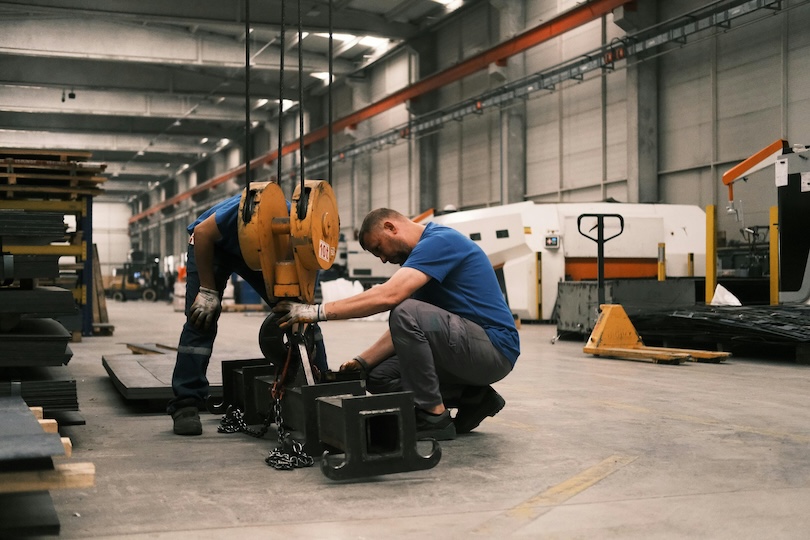In this toolbox talk – Guidelines for Slinging and Lifting Safety – I want to address a very important topic, encountered in most of the industries – the use of the lifting equipment and accessories!!!
The failure and/or misuse of lifting equipment and accessories has the potential to cause serious personal injury, significant damage to property, project delay and financial loss.
No matter how careful you are with slings use and storage, slings of every type wear out over time. Worn out slings are very dangerous and should never be used. As part of the guidelines for slinging and lifting safety, a very important factor is to conduct regular inspections of the slings you will be using and take them out of service if they are not in good condition.
Treat this toolbox only as a Guidelines for Slinging and Lifting Safety, and not a mandatory way to be followed. Follow the local law requirements and your company policies when it comes to health and safety.
Here below are few best practices that you can discuss within your workgroup when planning a lifting operation:
Guidelines for Slinging and Lifting Safety:
- Planning is the most important aspect in the guidelines for slinging and lifting safety – find out the weight of the load to be lifted, based on it, you will be able to choose your lifting accessories.
- Do not use the sling for any load exceeding its stated Working Load Limit (WLL).
- When using a multi-leg sling assembly, remember that the angles between the legs will reduce the Working Load Limit of the assembly. Consult the available Sling Chart and Safe Working Load Tables.
- Examine all slings before use and discard any that are defective.
- Lifting equipment and accessories must be colour coded, or an alternative method, according to your company internal procedure for the safe use of lifting equipment.
- Do not use a wire sling which contains a kink.
- Avoid bending wire rope slings around sharp corners of the load as this will effectively reduce their Working Load Limit.
- Slings which are found to be unfit for use should be destroyed. Inform your supervisor.
- A sling which has been ‘doubled’ around a shackle has a Working Load Limit equivalent only to that of a single part of it.
- Wire rope slings should be protected from sharp edges of the load by suitable packing.
- Do not drag wire rope slings along the floor.
- Check that the crane hook is positioned over the load’s center of gravity to prevent the load swinging when it is being raised.
- Make sure that the load is free of any obstacles before lifting.
- Comply with the hands-off policy by removing hands from slings before the crane takes up the load and stand well clear. Use of a push/ pull stick is always recommended – we never know how the slings or load can go wrong.

- Correct signals, according to the recognised code, should be given to the crane operator. The signals shall be given by the person responsible for the lift and nobody else. All personnel involved must be competent.
- Never allow the load to be suspended over the heads of other persons.
- After use, the slings should be stored in a tidy manner on a suitable rack off the floor.
- Keep wire rope slings away from welding and flame cutting operations.
- When not in use, wire rope slings should be kept in a dry store as a precaution against corrosion.
- No paint is to be applied to the fibers of the sling, as the paint will attack the fibers of the sling.
- All pipes shall be double wrapped and choked for lifting.
- All lifting equipment inspections must be done by competent personnel.
- A third party company should be hired to perform a thorough periodical inspection of the lifting equipment and accessories according to manufacturer and law requirement.
I hope this short toolbox talk – Guidelines for Slinging and Lifting Safety – will contribute to a better understanding of the lifting accessories safety within your team.
Important
The toolbox talks must be always a dialog and not a monolog. You need to be sure that all your team has a clear understanding of the discussed topics. ALWAYS ASK FOR FEEDBACK – THIS WILL HELP and WILL PROVIDE VALUABLE INPUTS!
